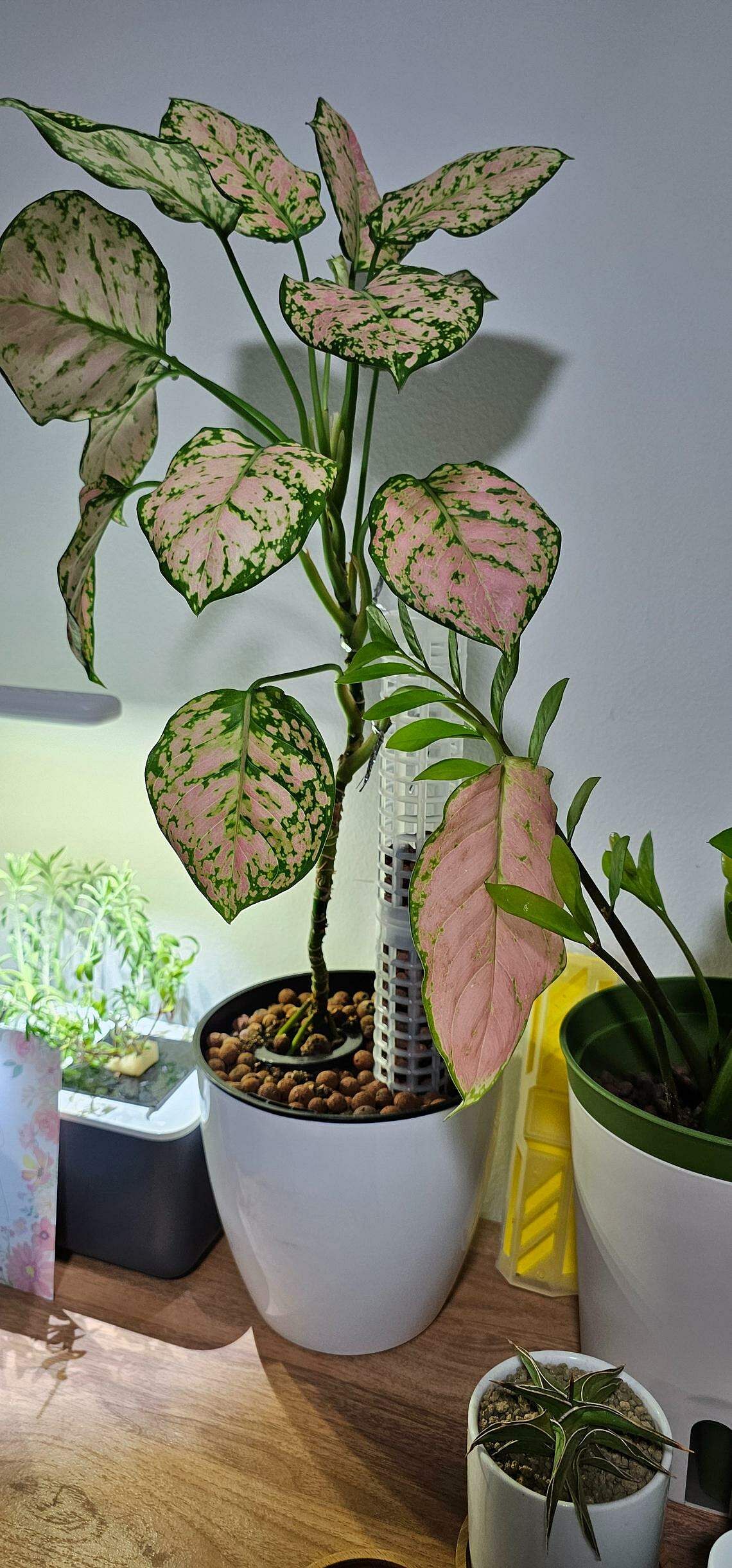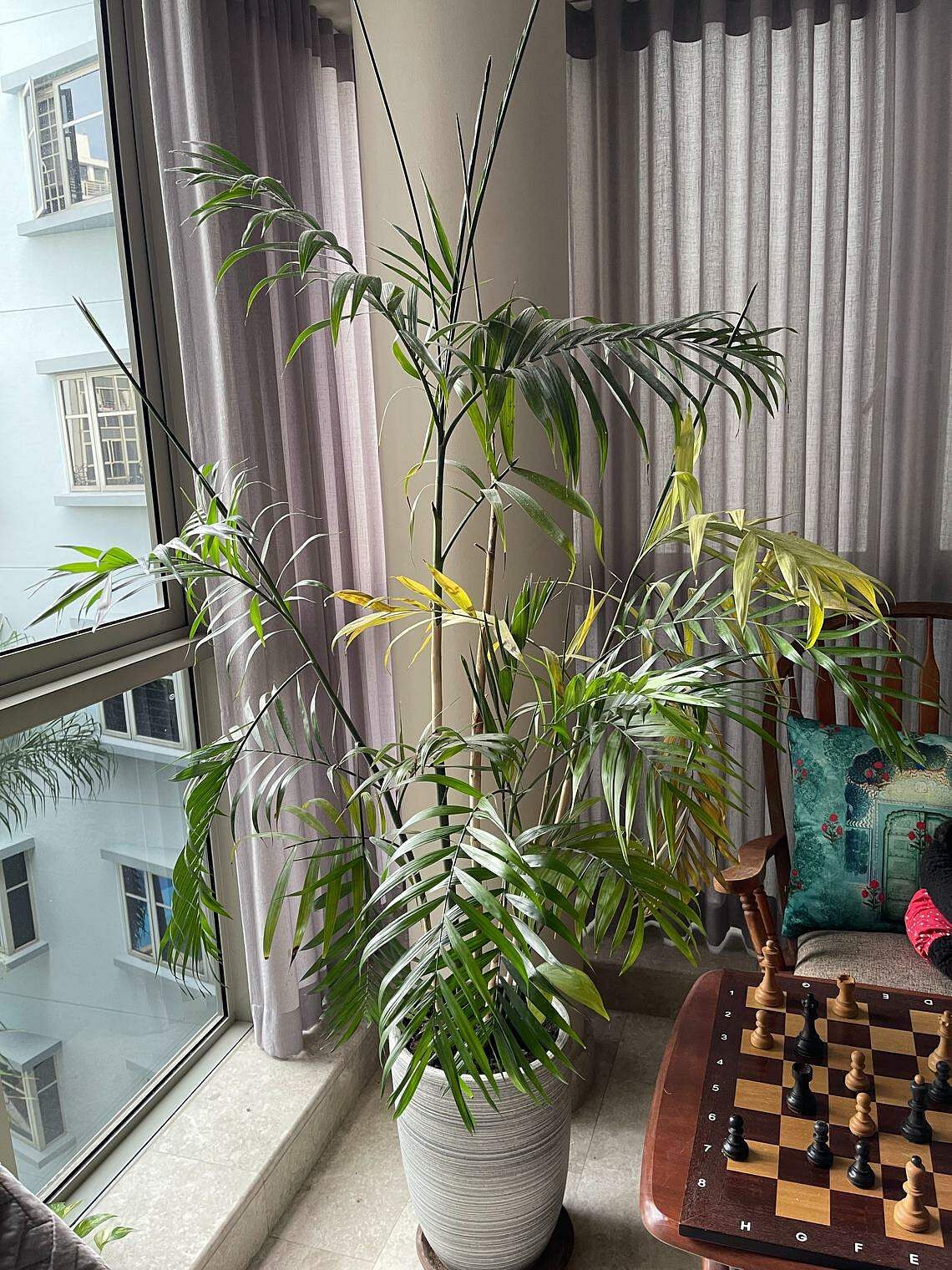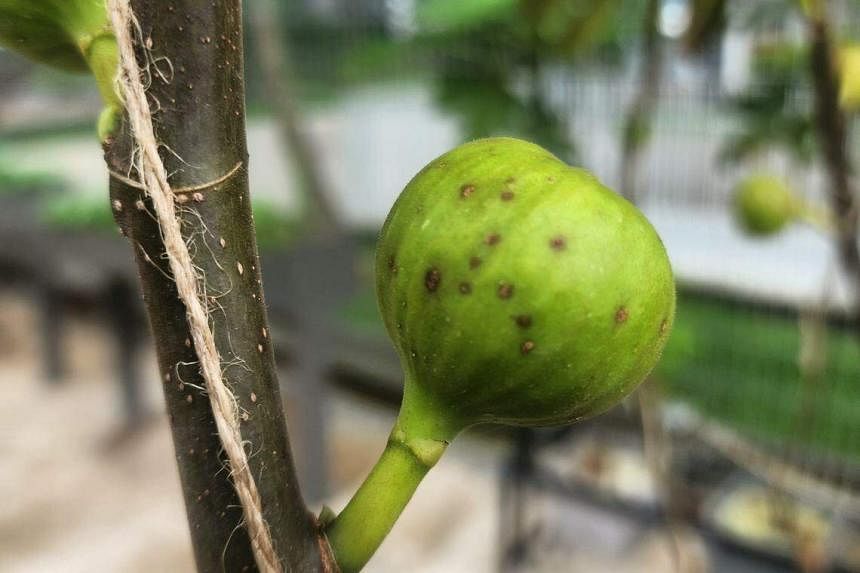Do not keep Lucky Bamboo in deep shade
When should I repot my Lucky Bamboo stalks into a bigger container?
Gabriel Chia
This pot is big enough for these Lucky Bamboo (Dracaena sanderiana) cuttings at their current size, but you can repot them once you observe that they have become too big for it and their roots have filled the pot.
You can take the stalks out to check if they have produced roots. Rooted cuttings can be potted in an aerated growing mix, preferably one containing organic matter and gritty components such as perlite and pumice.
Keep this mix moist and let it dry out slightly between each watering session, so the stalks are not waterlogged.
Give the stalks plenty of filtered sunlight – about four to six hours a day – as it will not thrive in deep shade indoors.
Prune Aglaonema for proper growth habit

I have grown my Aglaonema indoors for over a year in hydroculture (lecca balls) and prune the lower leaves when they dry up and wilt. However, the plant looks lanky and faded. How can I make it bushy and colourful?
Serena Lim
The lack of colour in your Aglaonema could be due to insufficient light. Although it is a shade-tolerant plant that will burn under brighter light, the current location may not be sunny enough. Move it to a bright windowsill or install grow lights, and monitor it for any improvement in foliage colour.
For a bushier growth habit, prune the top portion of the plant. This cutting can be potted separately. Ensure there are still leaves on the lower part of the main plant, as these will continue to photosynthesise and feed new growth.
Rotate palm for full sunlight exposure

My plant’s leaves are yellow, even though I water it when the soil is dry and keep it near the window so it gets sunlight. If there is no rain, I open the window for ventilation. How do I care for this plant?
Kanthimathi Srinivasan
The side of the plant facing the window looks healthier and greener than the other. Rotate your pot slightly every few days so all parts of the plant can get sunlight. Move the pot nearer to the window and ensure the light is not blocked by curtains.
The root zone should be kept moist and not be allowed to dry out totally, or the roots may die. Insert your finger into the potting mix to check its moisture level. The surface may feel dry, but the soil beneath may still be moist.
Fig fruit looks infected

What is causing the black dots on my fig? How can I prevent them from recurring?
Adrian Ling
Your plant’s fruit may have a fungal disease. This is common in Singapore’s hot and humid climate, especially when the plant is grown in the open.
Grow your fig plant under a clear shelter to reduce the impact of excessive moisture from the rain. Make sure it has proper air circulation and is not crowded with other plants.
Apply copper fungicide regularly to reduce the incidence of disease.
Fiddle-leaf Fig is sunburnt

This young plant gets at least four hours of direct sunlight a day and is watered every two days. Why have the leaves turned brown?
Tay Soon Ann
The older leaves of your Fiddle-leaf Fig (Ficus lyrata) show signs of sunburn, but the plant has adapted to the higher light levels, with no damage to the new leaves at the top of the plant.
Although cosmetic damage has been done to older parts of the plant, there is no cause for concern. This is also not an unusual phenomenon, as many plants are produced under shadier conditions in production nurseries.
Note that this plant thrives outdoors, such as in parks and gardens. If kept in deep shade, its growth will be sluggish and the plant will deteriorate over time.
- Answers by Dr Wilson Wong, an NParks-certified practising horticulturist and parks manager. He is the founder of Green Culture Singapore and an adjunct assistant professor (Food Science & Technology) at the National University of Singapore.
- Have a gardening query? E-mail it with clear, high-resolution pictures of at least 1MB, if any, and your full name to stlife@sph.com.sg. We reserve the right to edit and reject questions.

